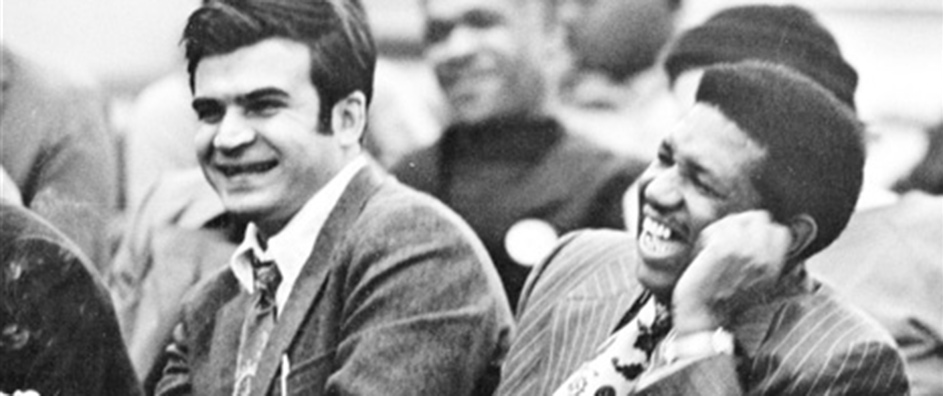In the realm of spiritual narratives, the journey of individuals from Iran to Harlem encapsulates a profound exploration of faith and perseverance. This odyssey, marked by trials and tribulations, epitomizes the resilience of the human spirit in the face of adversity while simultaneously illustrating the deeply-rooted tenets of the Bahá’í Faith. This article seeks to unravel the nuances of this compelling narrative, exploring the interplay of cultural identity, faith, and social justice through the lens of a Bahá’í worldview.
At the core of this journey lies the historical backdrop of the Bahá’í Faith, which originated in 19th-century Iran amidst an atmosphere of religious persecution and societal upheaval. Adherents of the faith faced immense challenges, including systemic oppression and ostracization. These circumstances propelled them to seek refuge and solace in various parts of the world, notably in places such as Harlem—a vibrant cultural hub that beckoned individuals seeking freedom and expression. The juxtaposition of these two locations—Iran, with its conservative traditions, and Harlem, known for its progressive values—creates a rich tapestry of experiences informed by personal conviction and communal identity.
The voyage from Iran to Harlem exemplifies more than a mere physical passage; it represents a spiritual evolution, wherein individuals cultivate their faith amidst the complexities of displacement. The Bahá’í teachings emphasize the unity of humanity, which resonates deeply with the immigrant experience. A key tenet of this faith is the belief in the oneness of humanity, a principle that urges individuals to transcend the barriers of race, nationality, and creed. The Bahá’í adherents who traversed from Iran to Harlem embodied this ideal by forging connections within the diverse communities of their new environment, fostering a sense of belonging and mutual respect.
Moreover, the harrowing journey reflects an unwavering commitment to the principles of justice and equity. The realities of discrimination and hardship faced by Bahá’í immigrants serve as poignant reminders of the systemic inequities prevalent in society. The stories of these individuals not only capture the struggle for personal freedom but also highlight their resolute determination to advocate for the rights of others. Embedded within the Bahá’í teachings is the call to action, encouraging believers to address injustices and work collaboratively towards a more equitable world.
This narrative of perseverance is further enriched by the cultural contributions of Bahá’í immigrants in Harlem. Within this vibrant community, individuals who arrived with deep-seated cultural traditions interwove their heritage with the rich tapestry of African American culture. This blending of influences gave rise to a dynamic interaction of ideas, art, and social movements that transcended generational boundaries. The artistic expressions witnessed in Harlem—be it through music, poetry, or visual arts—serve as a testament to the transformative power of faith infused with cultural identity.
As the followers navigated the complexities of acculturation, they unearthed a deeper understanding of their spiritual teachings. Engaging with fellow community members, they became involved in dialogues surrounding civil rights, gender equality, and interfaith harmony. Such interactions illuminated the relevance of Bahá’í principles in contemporary societal issues, prompting individuals to actively participate in the collective struggle for justice. This communal engagement encapsulated the essence of Bahá’í teachings, emphasizing service to humanity as a manifestation of divine love.
An intriguing facet of this narrative is the exploration of the commonality shared amongst diverse immigrant backgrounds. The Bahá’í experience underscores the larger human condition—illustrating how individuals, regardless of their origins, share universal aspirations for dignity, recognition, and belonging. This intrinsic connection, reflected in the teachings of Bahá’u’lláh, promotes the idea that all human beings are interconnected, fostering a profound sense of empathy and understanding across cultural divides.
The journey from Iran to Harlem is imbued with challenges that test the very fabric of faith itself. It reflects the trials that individuals must endure to stay true to their spiritual convictions. These challenges may manifest as cultural dissonance, generational clashes, or a persistent longing for home. However, the perseverance exhibited by Bahá’í individuals often crystallizes into a source of inner strength, driving them to navigate adversities with grace. The tenacity borne from such experiences becomes both a source of personal empowerment and communal solidarity.
In this context, the concept of perseverance takes on a multifaceted dimension. It speaks not only to the endurance required to overcome obstacles but also to the transformative power of faith in catalyzing resilience. The Bahá’í teachings advocate for steadfastness in the pursuit of truth, encouraging adherents to embody their spiritual principles through action, thus becoming beacons of hope and inspiration for others.
Ultimately, the journey from Iran to Harlem exemplifies a narrative steeped in faith, resilience, and cultural amalgamation. It poignantly illustrates how the Bahá’í teachings empower individuals to transcend personal struggles and engage with broader social justice efforts. The stories of those who traversed this path highlight the profound connections forged between faith and community, illuminating the possibility of hope amid adversity. This narrative invites profound reflection on the virtues of perseverance, unity, and the unwavering pursuit of justice that resonates at the heart of the Bahá’í teachings.
